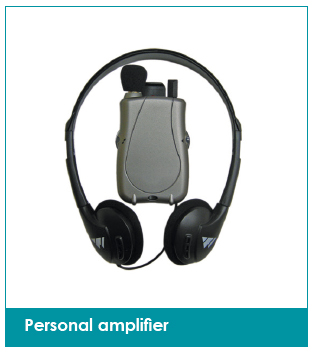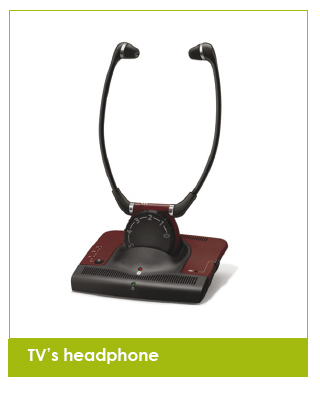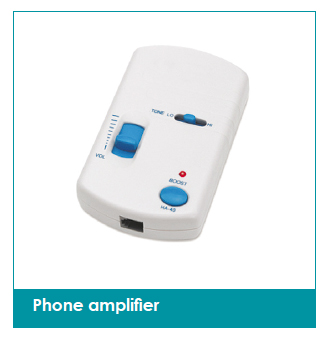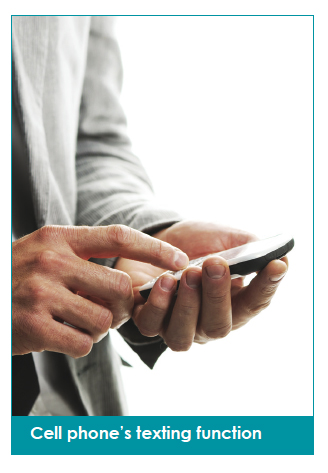
Improve your quality of life with assistive listening devices
Assistive listening devices (ALD) can greatly improve your daily life. These accessories help you hear better in particular situations, like talking on the phone, watching television or sleeping. They are complementary to hearing aids.
Controlling your environment with listening devices
 Listening devices are designed to amplify sounds in your immediate environment. Some alerting systems notify you of sounds in another room or at night when you are not wearing your hearing aids. When an alarm clock or the smoke detector goes off, the phone or doorbell rings, or even when a baby cries, the system captures the sound and sends a signal to a receiver. The receiver then activates a warning light or emits vibrations that alert the user. These systems are even designed to wake you if you’re sleeping, providing you independence and peace of mind, during the day and at night.
Listening devices are designed to amplify sounds in your immediate environment. Some alerting systems notify you of sounds in another room or at night when you are not wearing your hearing aids. When an alarm clock or the smoke detector goes off, the phone or doorbell rings, or even when a baby cries, the system captures the sound and sends a signal to a receiver. The receiver then activates a warning light or emits vibrations that alert the user. These systems are even designed to wake you if you’re sleeping, providing you independence and peace of mind, during the day and at night.
Hearing a speaker clearly
These types of devices send or amplify a speaker’s voice so that it is heard more clearly by reducing the negative effects of ambient noise and distance. A good example of this listening device is the MF system, or a personal amplifier. The person speaking wears a microphone that is connected to an emitter, which wirelessly sends his or her voice to a receiver worn by the person with hearing loss. Using headphones or a listening device (in a magnetic necklace or through direct connection), the person can clearly hear a voice at the correct strength at a distance of 30 to 100 feet. This system is very popular with students who must hear what a professor is saying, with people attending conferences and in some movie and performing art theatres.
Hearing the TV
 There are also systems that allow you to watch television without bothering the family or neighbours by turning the volume up high. Wireless headphones mean you can listen to the TV at a normal, audible level. On some models, the amplification can be adapted based on the hearing loss in each ear. These systems can be used with or without hearing aids.
There are also systems that allow you to watch television without bothering the family or neighbours by turning the volume up high. Wireless headphones mean you can listen to the TV at a normal, audible level. On some models, the amplification can be adapted based on the hearing loss in each ear. These systems can be used with or without hearing aids.
Talking on the phone
There are several models of telephones (landlines or cell phones) that are adapted to individual needs. The phone amplifier, for example, amplifies sounds, regulates the highs and lows, and makes it easier to understand the caller. Some devices also have a light indicator, a headset with listening devices or a teletypewriter (TTY, which transcribes the spoken words into text).
 Various types of ALDs make it easier to use a cell phone by creating a connection from your cell phone with Bluetooth® to your hearing aids. As with all hands-free equipment, all you need to do is answer the call and begin speaking.For those who have difficulty speaking on the phone even with amplification, using a cell phone’s texting function is an excellent option.
Various types of ALDs make it easier to use a cell phone by creating a connection from your cell phone with Bluetooth® to your hearing aids. As with all hands-free equipment, all you need to do is answer the call and begin speaking.For those who have difficulty speaking on the phone even with amplification, using a cell phone’s texting function is an excellent option.

Your hearing professional can help you find the ALDs that meet your needs and your level of hearing loss. He or she can also point you to organizations that can help you cut the costs of these purchases if you are eligible for their programs.










